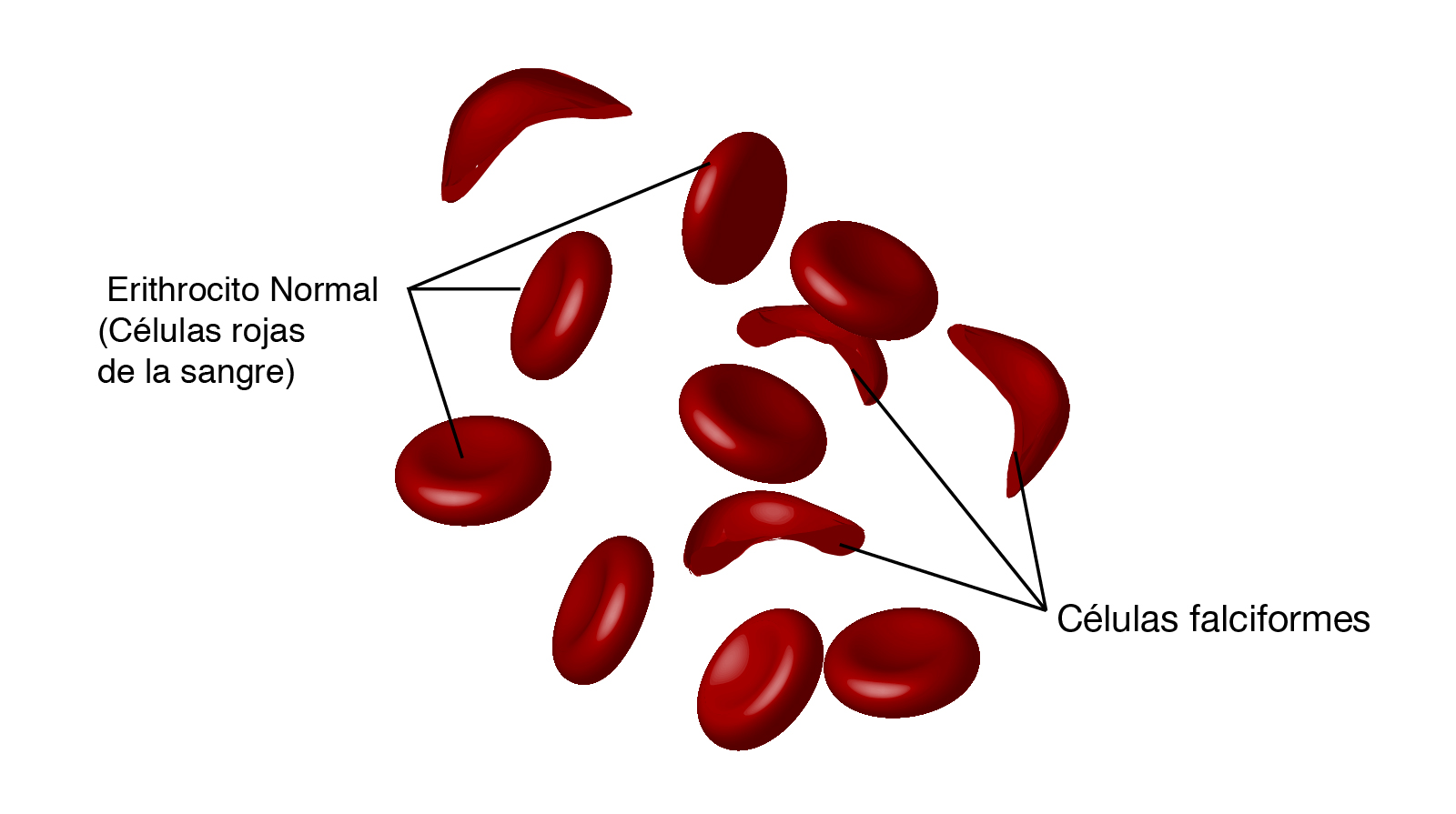FALCIFORM ANEMIA (Sickle cell anemia)
1.- INTRODUCTION:
Sickle cell anemia is a genetic disease that affects the red blood cells, by changing its form by a mutation in hemoglobin. This pathology is more frequent in populations with sub-Saharan origins, with one third of those affected being children. Symptoms begin to occur early on, from 3 months, when fetal hemoglobin ceases to occur and production of mutated hemoglobin begins.
Today, the treatment is the follow-up of the complications of the disease, however, different therapies are under study, such as halogen gene transplantation of generically modified hematopoietic cells, with promising results so far and with minimal side effects.
Sickle cell anemia is a genetic disease that affects the red blood cells, by changing its form by a mutation in hemoglobin. This pathology is more frequent in populations with sub-Saharan origins, with one third of those affected being children. Symptoms begin to occur early on, from 3 months, when fetal hemoglobin ceases to occur and production of mutated hemoglobin begins.
Today, the treatment is the follow-up of the complications of the disease, however, different therapies are under study, such as halogen gene transplantation of generically modified hematopoietic cells, with promising results so far and with minimal side effects.
2.- PATHOPHISIOLOGY:
ACF originates from a mutation on chromosome 11, which results in replacement
of glutamic acid, which generates the morphological condition of erythrocytes.
The mutation of this pathology is inherited recessively. The most common forms of
ACF presentation are homozygous sickle cell disease (HbSS) and one that
includes hemoglobins.
3.- CLINICAL PRESENTATION:

The symptoms presented in the patients are; paleness, tiredness, necrosis, difficulty
healing, acute pain crises that are variable in duration and present
at different parts of the body, they are secondary to hemolytic anemia, caused
by an occlusion vessel cast by deformed erythrocytes, with a result of an injury
by reperfursion, ending in stimulations such as; cold winds, low humidity in the environment
dehydration, stress, alcohol consumption, and in women, menstruation.

4.- ASSOCIED COMPLICATIONS:
Sickle cell anemia can cause some complications such as - Retinopathy - Neurological (most frequent complication in pediatric age) - Osteonecrosis - Venous treombolisms (more frequent in pregnant women or puerperium) - Abnormal lung function - Nephritic - Congestive heart failure - Among others whether the disease or treatment.


No hay comentarios:
Publicar un comentario